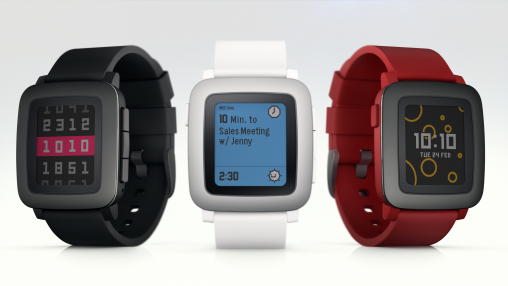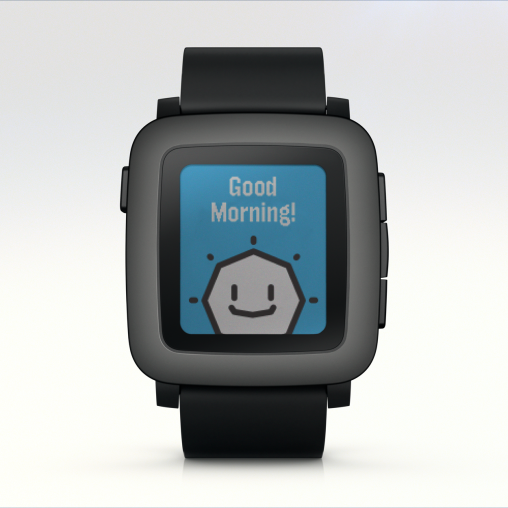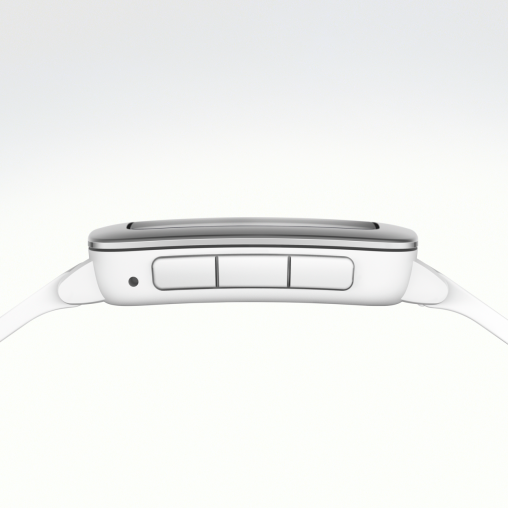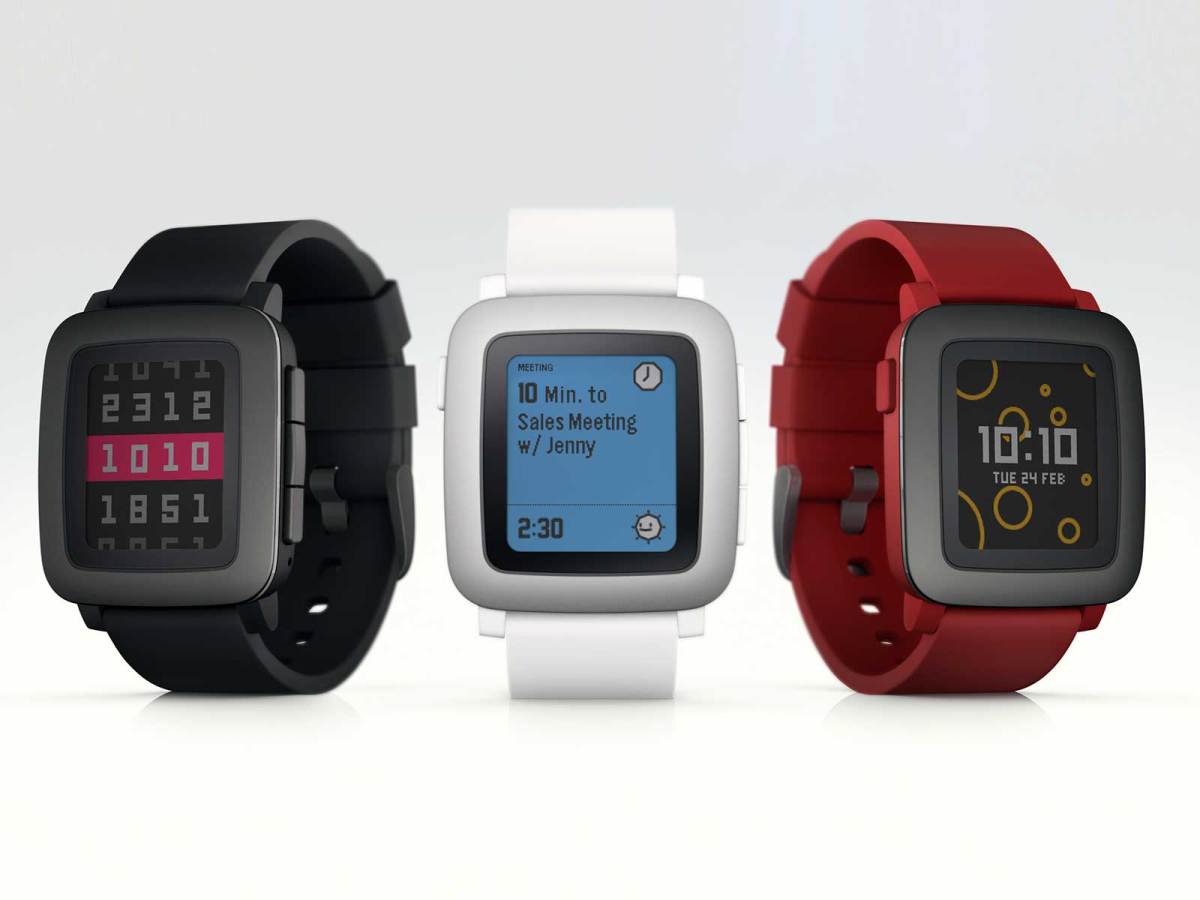San Jose, United States
“We are not interested in imprisoning people behind the tall walls of operating systems from which they cannot escape…”
US-based smartwatch maker Pebble is actively looking to grow its retail footprint in Australia and expand beyond its current exclusive distribution agreement with Dick Smith.
“We are very actively exploring a number of other retail outlets in Australia beyond where we currently are,” Pebble CFO Marin Tchakarov told Appliance Retailer in San Jose this week.
Dick Smith secured the exclusive retail rights to the Pebble Steel smartwatch when it launched in Australia in 2014. This year the company which takes credit for creating the modern day smartwatch category has new products, big competition and a mass market to tap into.
Australia is one market which has caught the Palo Alto-based company’s attention.
“We think it is an amazing marketplace for us to grow. We love the culture, we love the opportunity and we just need to pull the freight as quickly as we can,” Tchakarov said.
Tchakarov said Pebble is currently in conversations with many different retail outlets and the brand is incredibly excited to grow its Australian presence. Australians’ active lifestyles and outdoorsy culture is “an amazing fit” for Pebble he said.
“So much about our product and our overall user experience is about consuming information on the go.”
The company entered the public’s collective conscious in 2012 when its first Kickstarter campaign raised $10.3 million for its first generation product. Fast forward to December 2014 and Pebble has shipped its one millionth smartwatch.
The company returned to Kickstarter to fund its newest generation products the Pebble Time and Pebble Time Steel. For those earlybirds that got their orders in via Kickstarter those products are expected to ship between May and August 2015.
“We are extremely happy with that demand we saw for our new products,” Tchakarov said.
Explaining the decision to fund the newest product launches via crowd funding Tchakarov said it all comes back to the company’s philosophy of putting the consumer first.
“With this community that early on supported and backed us up, we wanted to go back and say ‘thank you’. We wanted to go back and pay homage to that community and give them the opportunity to get the next generation — the third generation — products first.”

The reality today is the company is looking at much bigger unit volumes as the market expands from early adopters.
“I think we are at the inflection point of venturing into what we call mass market,” Tchakarov said. “We are gearing up for that. It is going to be a very different game for the rest of 2015 and into 2016 in terms of unit volumes and adoption.”
Part of the reason for that growth is increased interest in the category fuelled by the arrival of the Apple Watch on the scene.
“Apple, as everybody knows, is joining the party but we are actually looking forward to them joining the party.
“They are bringing awareness and interest in this space, in this frankly very new wearable category. It’s validating the market. It’s growing the pie with tremendous pace.”
Tchakarov said in the last 45 days he has been approached about a dozen times by people asking if his new Pebble Time was the Apple Watch. Tchakarov, an iPhone user, admits to being mildly annoyed the first few times, but then began to relish the opportunity to talk about the differences between the brands.
One of the biggest differences from Apple is that Pebble watches work with any smartphone.
“We are not interested in imprisoning people behind the tall walls of operating systems from which they cannot escape,” Tchakarov said.
As a hardware manufacturer, Pebble is a pure play smartwatch maker, so they also aren’t interested in selling you more smartphones or tablets. Tchakarov said much of their competition views the category as an accessory that draws you deeper into its ecosystem and were just hitting ‘Copy & Paste’ and transferring smartphone functions onto your wrist.
In contrast, Tchakarov said Pebble is innovating by “discovering problems that the world hasn’t discovered that they have”.
So, what problem is the smartwatch designed to solve?
“Whether the world realises it or not, it is already fatigued with the level of engagement that they have with their already adopted smartphone technology.”
Tchakarov demonstrated how much engagement it takes to interact with a smartphone; you have to find it, pull it out of you pocket, it has a dark screen, you have to activate it, enter a passcode and then you have to start going through apps.
For example if you are trying to order a car you have to disengage from your conversation, scroll through apps and make a choice between Uber and Lyft before you even make a booking.
Compare that to raising your wrist and saying “Pebble please get me a car”. The level of engagement is shrunk to a single simple phrase expressing exactly what you need.
Driving this functionality requires a level of artificial intelligence which is “overcoming the inoperability between data streams.”
Tchakarov explained that “apps are these castles that have walls around them and each app is one thing.” Apps, he said, require a “pretty deep level of engagement.”
Pebble is about “syphoning to the next level of engagement.” The smartwatch pieces data together and delivers a small, contextually relevant piece of information, with the aim of organising our daily lives more seamlessly and efficiently.
Wearables won’t replace smartphones, Tchakarov said, and this is just the next iteration of engagement with these kinds of devices. Not all smartphone functions will suit the wearable form factor.
However info from the calendar, GPS and clock become useful when combined by smartwatch software. Imagine a platform which knew if you have a meeting in one hour and you are currently 30 kilometres away. The watch could send you an alert, tell you to hurry up and the best route to take to avoid traffic congestion at that time of day.

Contextually relevant information delivered extremely discreetly in real time by wearables will most likely be location-based, time-based and interest-based. Pebble has been working on ways of cataloguing, organising and aggregating information in ways that are useful to you.
“We’ve been very busy thinking how we can better aggregate and most efficiently deliver the tiniest of snippets of information that are useful at the right moments of time in our lives.”
To build this world Pebble has 30,000 developers working in the ecosystem, and nearly 8,000 applications and watch faces for these devices.
This thinking also comes across in the hardware design, for example unlike your smartphone, Pebble smartwatches are designed without a touch screen, but a screen that is always on. The rationale being that you are much more likely to accidentally touch or activate a device worn on your body than a smart and, similarly you don’t want to have to wake it up to check the time. You just want to look at your wrist.

The company believes the IoT trend will continue and Pebble aims to be the most loved, most chosen wearable platform to seamlessly connect humans to this world.
“We see the world being very shortly populated with a rich variety of internet of things devices.
“We want to be the most preferred, loved platform that controls all of our devices in our life. We have gotten much further ahead in accomplishing that because we have been very innovative from the very beginning in how we are solving these problems.
“We believe that it is all about making your life better and easier by connecting you faster and more seamlessly… We are giving you time back and we are a watch company,” Tchakarov said.

